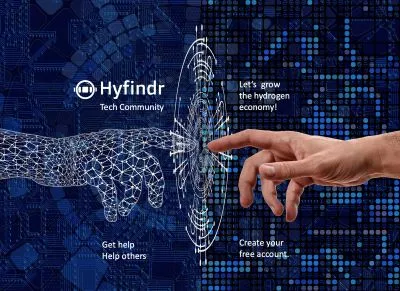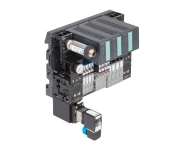- What are hydrogen automation systems?
- What role do automation systems play in the operation of electrolyzers in hydrogen production?
- How do automation systems contribute to the efficiency and safety of hydrogen storage and transport processes?
- What specific measures do automation systems implement to ensure explosion protection and safety in hydrogen facilities?
- In the context of centralized and decentralized solutions, how do automation systems adapt to varying infrastructural needs in hydrogen production and distribution?
- Can you explain the integration of IoT solutions in automation systems for hydrogen refueling stations?
- What are the primary objectives of process optimization facilitated by automation systems in fuel cells?
- How do automation systems ensure functional safety in the handling and utilization of hydrogen?
- What are the key components and technologies involved in automation systems tailored for hydrogen applications?
- How do automation systems contribute to the scalability and flexibility of hydrogen infrastructure?
- What challenges and opportunities exist in the advancement of automation systems for hydrogen-related processes?
Browse all automation systems from leading suppliers on our marketplace!
What are hydrogen automation systems?
Hydrogen automation systems are integrated solutions designed to manage, control, and optimize various processes within the energy management, hydrogen production, storage, and distribution chain. These systems encompass both hardware and software components that work together to facilitate the seamless operation of hydrogen facilities. The hardware includes sensors, control panels, and actuators, while the software involves advanced control algorithms and monitoring tools. By automating these processes, hydrogen automation systems ensure high efficiency, safety, and reliability in the handling of hydrogen. They help in real-time monitoring, adjusting parameters as needed, and swiftly responding to any anomalies, thus minimizing human error and enhancing the overall performance and safety of hydrogen-related operations.
What role do automation systems play in the operation of electrolyzers in hydrogen production?
Automation systems are critical in the operation of electrolyzers, as they manage and optimize the electrolytic process that splits water into hydrogen and oxygen. These systems monitor parameters such as cell voltage, temperature, and pressure, ensuring optimal performance. Automation helps in real-time adjustments to maintain efficiency, reduce energy consumption, and prolong the lifespan of the electrolyzer components.
Automation systems play a crucial role in the operation of electrolyzers used in hydrogen production by managing and optimizing the electrolytic process that splits water into hydrogen and oxygen. These systems continuously monitor key parameters such as cell voltage, temperature, and pressure to ensure the electrolyzer operates at optimal performance levels. Through real-time adjustments, automation systems maintain the efficiency of the process, reducing energy consumption and preventing potential issues that could damage the equipment. This not only helps in achieving higher production rates and quality of hydrogen but also prolongs the lifespan of electrolyzer components by preventing overheating, overvoltage, and other stressors. Overall, automation systems are essential for maximizing efficiency, ensuring safety, and enhancing the durability of electrolyzers in hydrogen production.
How do automation systems contribute to the efficiency and safety of hydrogen storage and transport processes?
Automation systems enhance efficiency by optimizing storage conditions and ensuring the precise control of pressure, temperature, and flow rates. For safety, they provide continuous monitoring and early detection of anomalies such as leaks or pressure drops. Automated safety protocols and emergency shut-down procedures are also in place to prevent accidents and ensure safe transport. Additionally, some applications must reach Safety Integrity Level (SIL) 2 or SIL 3 to ensure the highest levels of operational safety. When signals traverse different ATEX zones, barriers must be used to prevent any potential ignition sources, thus maintaining the integrity and safety of the entire system.
What specific measures do automation systems implement to ensure explosion protection and safety in hydrogen facilities?
- Automation systems in hydrogen facilities implement several measures for explosion protection and safety, including:
- Continuous monitoring
- Automated ventilation and purging systems to prevent the accumulation of hydrogen.
- Intrinsically safe equipment that minimizes the risk of sparks.
- Real-time alarms and automated shutdowns in case of detected anomalies.
- Compliance with industry standards and regulations for explosive atmospheres.
In the context of centralized and decentralized solutions, how do automation systems adapt to varying infrastructural needs in hydrogen production and distribution?
Automation systems offer scalability and flexibility to adapt to both centralized and decentralized hydrogen production and distribution setups. For centralized systems, they manage large-scale operations with complex data integration and control. For decentralized systems, they provide modular solutions that can be easily deployed and managed locally, ensuring consistent performance across diverse infrastructural settings. Thanks to the modularity of our u-remote family, our customers are very satisfied with its concept. Each module's compact 11.5 mm thickness makes it both compact and modular. Additionally, features such as galvanically isolated current paths allow customers the freedom to design their refueling stations as modular as they prefer.
Can you explain the integration of IoT solutions in automation systems for hydrogen refueling stations?
IoT solutions in hydrogen refueling stations enable real-time data collection and remote monitoring of various parameters such as hydrogen levels, pressure, and temperature. These solutions provide predictive maintenance, optimize refueling operations, and enhance user experience by offering real-time station status updates. Integration with cloud platforms allows for advanced analytics, improving overall station performance and safety. One example of IoT integration in power management is the use of our premium PROtop series power supplies in cabinet applications. PROtop is IoT-ready, with all data available in the cloud and remote secure access possible. Power management is further supported by ProTop's ability to eliminate the need for a diode module in parallel or redundant power applications. Additionally, IIC and ATEX-approved maxGUARD electronic fuses help reduce costs and enable remote maintenance of the plant.

What are the primary objectives of process optimization facilitated by automation systems in fuel cells?
The primary objectives include:
- Enhancing the efficiency of operations.
- Reducing operational costs by optimizing the system .
- Improving the reliability and lifespan of components through predictive maintenance.
- Ensuring consistent performance by real-time monitoring and control of operational parameters.
How do automation systems ensure functional safety in the handling and utilization of hydrogen?
Automation systems ensure functional safety by incorporating multiple layers of protection and redundancy. These include:
- Real-time monitoring of critical parameters.
- Automated control systems that respond to unsafe conditions by shutting down operations or activating safety protocols.
- Regular diagnostics and self-check routines to detect and address potential issues.
- Compliance with international safety standards and certifications for hydrogen systems.
What are the key components and technologies involved in automation systems tailored for hydrogen applications?
- Key components and technologies include:
- Programmable Logic Controllers u-control (PLCs) for real-time control and automation
- Supervisory Control and Data Acquisition PROCON-WEB (SCADA) systems for monitoring and data collection
- Sensors and transducers for measuring pressure, temperature, flow, and gas concentrations
- Human-Machine Interfaces u-view (HMIs) for user interaction and control
- IoT devices such as IoT Gateway for remote monitoring and data analytics
- Cloud platforms like easy connect for data storage, analysis, and predictive maintenance
How do automation systems contribute to the scalability and flexibility of hydrogen infrastructure?
Automation systems enable scalability by allowing easy integration of new components and expansion of existing systems. They provide flexible configurations that can be adapted to varying operational requirements. Advanced data analytics and IoT integration help optimize performance and facilitate the efficient scaling of hydrogen infrastructure, ensuring that new demands and expansions are met without compromising on performance or safety.
What challenges and opportunities exist in the advancement of automation systems for hydrogen-related processes?
- Challenges:
- Ensuring safety in explosive environments.
- Integrating diverse technologies and standards.
- Addressing the high initial costs of advanced automation systems.
- Opportunities:
- Enhancing efficiency and reducing costs through process optimization.
- Improving safety and reliability with advanced monitoring and control systems.
- Supporting the growth of the hydrogen economy by enabling scalable and flexible infrastructure solutions.
- Leveraging IoT and data analytics for predictive maintenance and improved operational insights.
Content contributed by Weidmüller
The Weidmüller Group Smart Industrial Connectivity: Electrification, automation, digitalisation, electric connectivity, electromobility and renewable energies - markets in which Weidmüller is at home. Founded in 1850, the family-owned company is represented in over 80 countries with production facilities and sales companies. As a global player in electric connection technology, Weidmüller achieved a turnover of more than one billion euros in the 2022 financial year with around 6,000 employees worldwide - around 2,000 of whom work at the company's headquarters in Detmold, in the heart of East Westphalia-Lippe.




